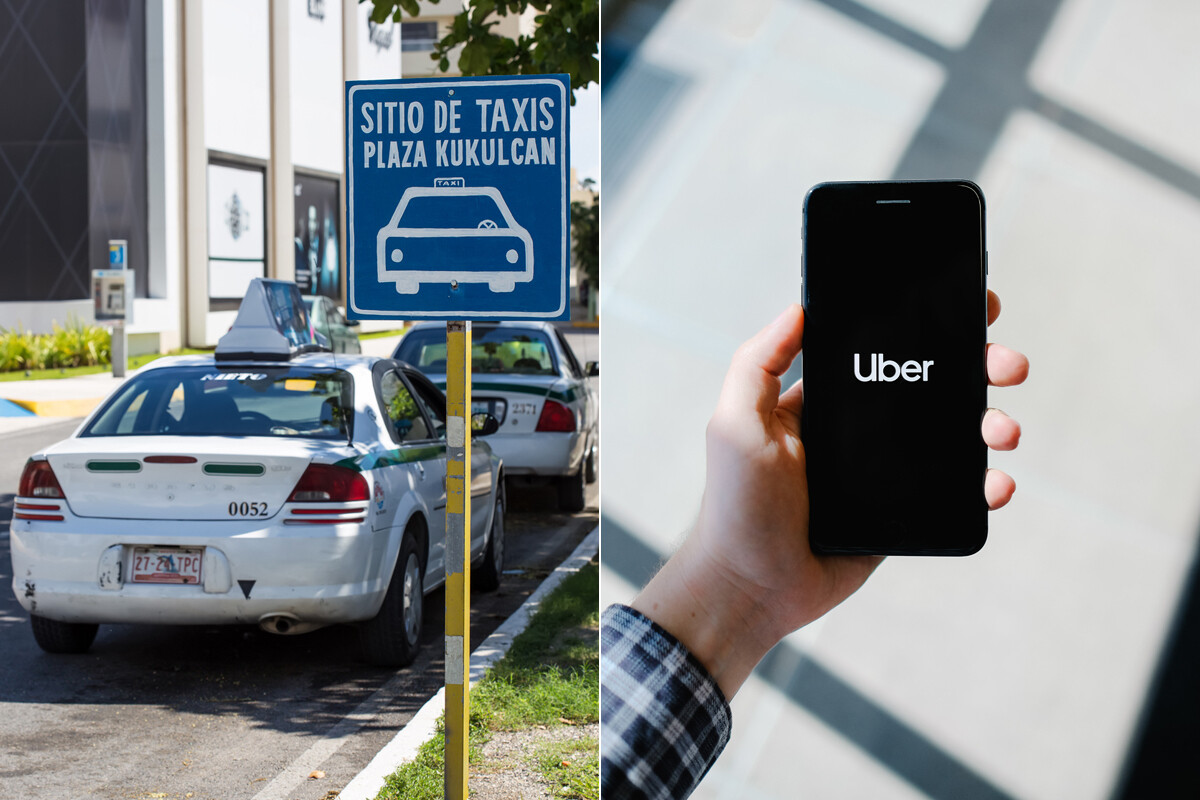
There is a big game in passenger transport: tourists. Taxi drivers and Uber fight to maintain their business in those spaces where tourists take precedence over this means of transport over any other. The result has been an almost inevitable clash between both business models. The last battle is fought in Cancun.
Green light. It is what has given justice to Uber in Mexico. They will be able to operate in the Cancun area… although they were already doing so. Its drivers have spent years denouncing that the taxi drivers in the area harassed, threatened, and assaulted them, but until now, they also did not have justice. The area government has to change the current regulations, so the sentence is ineffective immediately.
But it’s not all good news for Uber drivers. As our colleagues from Xataka in Mexico have reported, taxi drivers have organized to establish spaces of exclusion, places where the Uber driver has to pay up to 30,000 pesos (the average annual salary in Mexico in 2021 was just over 136,000 pesos ) if you want to go beyond the imposed border. If they do not pay, drivers expose themselves to serious violent actions.
The closed price. The war that is taking place between Uber and Mexican taxi drivers is not by chance. It is not the first, nor does it look like it could be the last. Tourists are a very sweet market for both sectors, as they usually represent passengers with high purchasing power compared to the recurring income obtained in the country.
But Mexican taxi drivers are experiencing a problem we have also experienced in Europe: passengers prefer the closed price. It is a great asset of Uber and one that companies such as Cabify or Free Now are exploiting, whose director in Spain, Isabel García, confirmed to us that it is the rate preferred by customers even though the platform operates with taxis. It is also no coincidence that cities have been implementing flat rates on regular long-distance routes, such as from the airport to the city center.
A long battle that does not seem to have an end. Where tourism is an economic locomotive, Uber and the taxi guild have fought a tough battle. It has happened in New York, France, Germany, and Spain. We have been living through a war for years that has ended with the Ábalos decree, which leaves the implementation of this type of platform in the hands of each region, with Barcelona and Madrid acting antagonistically.
Therefore, the situation in Cancun is not surprising. Countries like Thailand and India have also known the conflict up close. There is a common denominator in all these places: the tourist is the big game, with more money and more predisposed to use a closed-price service that provides greater security.
And a story that repeats itself. The case of Uber in Mexico is a story that has been repeating itself for some time. That of the company that begins to offer its services in a market in which it is illegal or has a diffuse regime. In one way or another, Uber begins its activity and gains ground with lower prices for the user and an objective: to gain popularity.
Its expulsion from the market implies significant social rejection once it has many customers. In addition, its leaders do not seem to be dissatisfied with the image of victims in the face of attacks by taxi drivers suffered by their drivers. It is not something I say; it is information that came to light this summer and in which emails circulated within the company were collected.
Also an ideological battle. Giving the green light to the Uber service has also become an ideological battle: that of those who want to preserve the taxi as a means of public transport away from any competition and those who prefer to deregulate the service and leave it to the free competition of the companies. Who wants to exploit it?
In Barcelona, the former has been chosen, placing important barriers such as using vehicles of a size that matches the luxury cars that VTC licenses used to exploit. In Madrid, however, the granting of licenses to companies such as Uber and Cabify has increased over the years. In Spain, the general picture is that this service has received so many licenses that its companies cannot find enough drivers to exploit them.

Sharlene Meriel is an avid gamer with a knack for technology. He has been writing about the latest technologies for the past 5 years. His contribution in technology journalism has been noteworthy. He is also a day trader with interest in the Forex market.
















